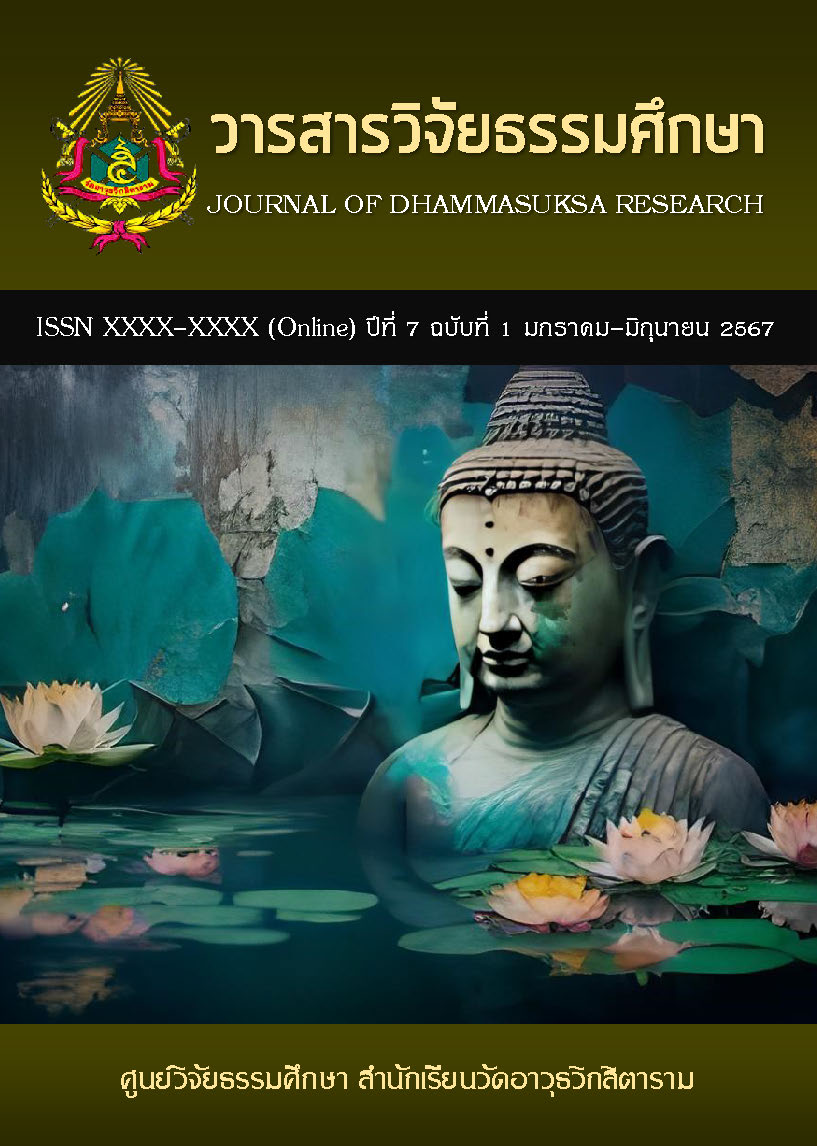ADMINISTRATORS’ TRANSFORMATIONAL LEADERSHIP MODEL FOR HIGHER ART SCHOOLS IN SHENYANG, LIAONING PROVINCE
คำสำคัญ:
Administrators transformational leadership model, Higher art school in Shenyang, Liaoning Provinceบทคัดย่อ
The objectives of this research were: (1) to determine the components of transformational leadership required by administrators; (2) to propose the model of transformational leadership for administrators of higher art schools in Shenyang, Liaoning Province; (3) to evaluate the model of transformational leadership for administrators of higher art schools in Shenyang, Liaoning Province.
The research was a mixed methodology, including qualitative and quantitative research design. The population of the research consisted of 564 who were administrative staff and teachers of Higher Art Schools in Shenyang, Liaoning Province. A proportional stratified random sampling method was used to sample, totaling 320 persons. The instruments used for data collection were semi-structured interview and a five-level rating scale questionnaire. The statistical used for data analysis were descriptive statistics and CFA. (Confirmative Factor Analysis).
The research findings revealed that: (1) there were four components and thirteen indicators of transformational leadership required by administrators, it consisted of: inspirational motivation, individualized consideration, intellectual stimulation and idealized influence, (2) The transformational leadership model for administrators of Higher Art Schools in in Shenyang, Liaoning Province that developed was consistent with the empirical data: Relative Chi-square = 43.26, Degree of Freedom = 34, Goodness of Fit Index = 0.99, Adjusted Goodness of Fit Index = 0.97, Root Mean Square Error of Approximation = 0.02, and Standard Root Mean Square Residual = 0.01 all in line with specified criteria. The important components of the model were idealized influence (λ = 0.96), followed by intellectual stimulation (λ = 0.95), inspirational motivation (λ = 0.92) and individualized consideration (λ = 0.90), respectively, (3) the results of the model evaluation in terms of utility, feasibility, propriety and accuracy found that it was of a high level.
เอกสารอ้างอิง
Avolio, B. J. and Bass, B. M. (1991). The full range leadership development programs: basic and advanced manuals. Binghamton, New York: Bass, Avolio Associates.
Barbara M. Byrne. (2016). Structural Equation Modeling with AMOS Basic Concepts, Applications, and Programming, Third Edition. First Published 2016 eBook Published 30 June 2016. Pub. New York: Imprint Routledge.
Barling, J., Christie, A., & Hoption, A. (2010). Leadership. In S. Zedeck (Ed.), Handbook of industrial and organizational psychology (pp. 183-240). Washington, DC: American Psychological Association.
Baskett, S., & Miklos, E. (1992). Perspectives of effective principals. The Canadian administrator. administrator.
Bass, B. M. (1985). Leadership and Performance beyond Expectations. Collier Macmillan: Free Press.
Bass, B. M. (1990). From Transactional to Transformational Leadership: Learning to share the vision. Organizational Dynamics, 18, 19-36.
Bass, B. M., & Avolio, B. J. (1994). Improving organizational effectiveness through transformational leadership. Thousand Oaks, CA: Sage Publications.
Best W. John. (1997). Research in Education. Boston MA. : Allyn and Bacon.
Burns, J. M. (1978). Leadership. NY: Harper & Row.
Cameron, Kim S. and Quinn, Robert E. (1999). Diagnosing and Changing Organizational Culture: Based on The Competing Values Framework. Reading Mass: Addison-Wesley
Chen, Yongxia, Jia, Liangding & Li, Chaoping et al. (2006). Reforming Leader, Psychological Empowerment, and Employee’s Organizational Commitment: Empirical Research in China. Management World. No.1. P.96-105.
Cortina, J. M. (1993). What is coefficient alpha? An examination of theory and applications. Journal of Applied Psychology, 78(1): 98-104.
Creswell, J. W., & Plano Clark, V. L. (2018). Designing and Conducting Mixed Methods Research (3 ed.). Los Angeles: SAGE Publications, Inc.
Liu Yuou. (2023). Effects of Administrators’ Transformational Leadership on Organizational Commitment of Art School Teachers in Shenyang, Liaoning Province. Journal of Dhammasuksa Research, Vol 6 No 1 (January- June 2023).
Minhyun Kim,Glenn Hushman, Lauren Holz and Hosung So California. (2017). The Effect of Transformational Leadership on Middle School Students’ Intrinsic Motivation and Expectancy-Value in Physical Education. European Journal of Educational Sciences, EJES June 2017 edition Vol.4, No.2 ISSN 1857- 6036.
Moos L, Huber S (2007) School leadership, school effectiveness and school improvement: Democratic and integrative leadership. In: Townsend T (ed.). International Handbook of School Effectiveness and Improvement. Dordrecht: Springer, pp. 579–597.
Muchinsky, P.M. (2006). Psychology Applied to Work: An Introduction to Industrial and Organizational Psychology. (8th ed.). California: Thomson/Wadsworth.
Nongluck Wirachchai. (2005). The development of indicators>for quality assessment of administration and management. Area>Location: Education. Bangkok: Than Aksorn.
Pounder, J. S. (2003). Employing transformational leadership to enhance the quality of management development instruction. Journal of Management Development, 22, 6-13.
Wang Zihao. (2023). Mediating Effects of Organizational Commitment on the Relationship between Leadership Behavior and Job Satisfaction of Art Teachers in Shenyang, Liaoning Province. Nimitmai Review Journal, Vol 6 No 1 (January-June 2023).
ไฟล์ประกอบ
เผยแพร่แล้ว
รูปแบบการอ้างอิง
ฉบับ
ประเภทบทความ
หมวดหมู่
สัญญาอนุญาต
ลิขสิทธิ์ (c) 2024 วารสารวิจัยธรรมศึกษา

อนุญาตภายใต้เงื่อนไข Creative Commons Attribution-NonCommercial-NoDerivatives 4.0 International License.



